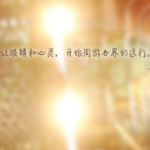China’s five-thousand-year civilization, along with its unparalleled rich literary records, is widely recognized. Within this profound historical context, Chinese calligraphy and painting art uniquely represent the evolving nature of tradition through their distinct artistic forms and languages. These sister arts complement and interpret the essence of Chinese culture. Both utilize similar tools and materials, as noted in historical texts: “At that time, calligraphy and painting were unified and indistinct, where the inability to convey meaning led to writing, and the inability to depict forms led to painting.” Although calligraphy and painting share origins, they have evolved independently yet complementarily. The development of Chinese calligraphy is intricately linked to the emergence and evolution of Chinese characters.
So, what is “calligraphy”? It can be understood through its nature, aesthetic characteristics, sources, and unique expressive techniques. Calligraphy is an abstract art based on Chinese characters, written with a brush, embodying a four-dimensional quality. It reflects the fundamental principle of “unity of opposites” and expresses the spirit, temperament, knowledge, and cultivation of the individual.









